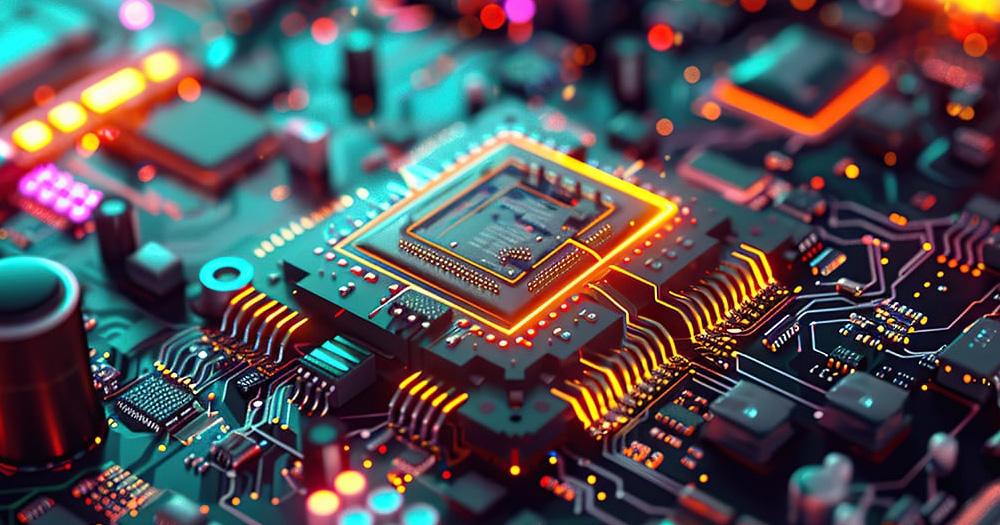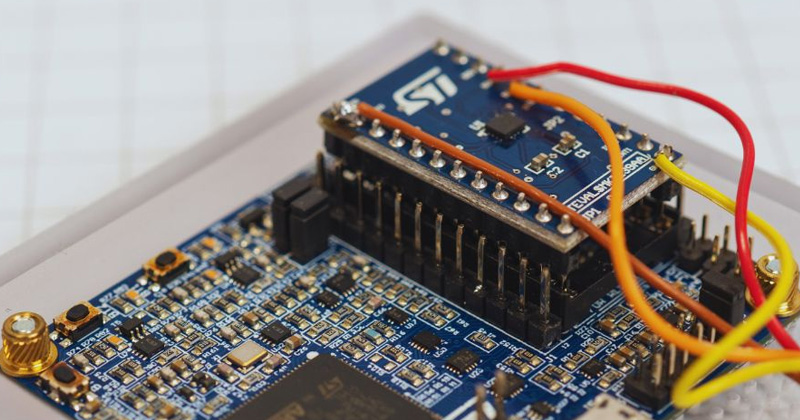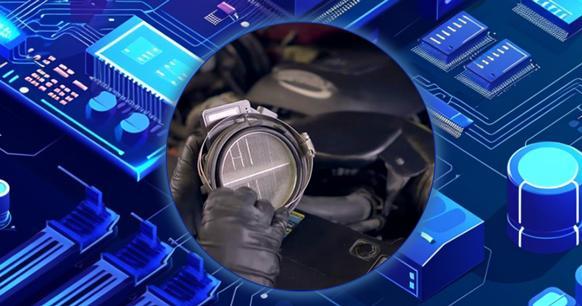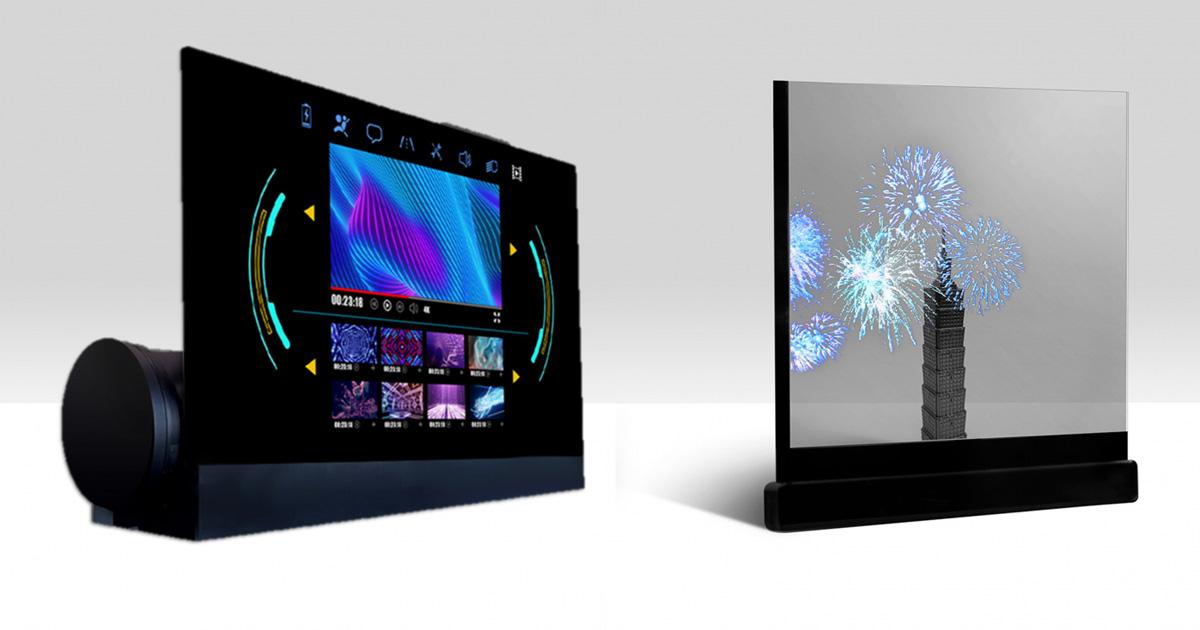
Microprocessor vs Integrated Circuit: Understanding the Core of Electronics
A microprocessor is a small computer chip that contains a computer's processing or central processing unit (CPU). It is an electronic device that is capable of executing instructions and performing a range of operations on data. The microprocessor is the central component of a computer system and can be programmed to perform a variety of tasks using the appropriate software.
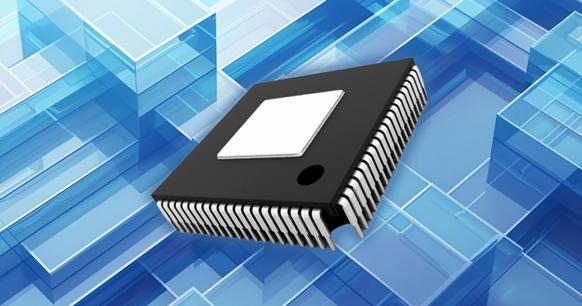
An integrated circuit (IC) is a compact electronic circuit comprising multiple electronic components, including resistors, transistors, capacitors, and diodes, integrated on a single chip of semiconductor material, typically silicon. An IC is capable of performing specific functions, including amplification, switching, and signal processing.
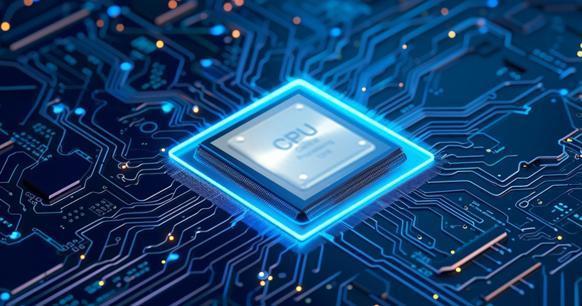
The primary distinction between a microprocessor and an integrated circuit is their intended function and level of complexity. A microprocessor is a more complex device, designed to perform general-purpose computing tasks. In contrast, an IC is a more specific device, designed to perform specific functions.
Another distinction between a microprocessor and an integrated circuit is their architectural design. A microprocessor typically features a more intricate architecture, comprising registers, arithmetic and logic units (ALUs), and control units. By contrast, an integrated circuit may have a more streamlined architecture comprising just a few core components, such as a transistor or diode.
Microprocessor
A microprocessor is a small computer chip that contains a central processing unit (CPU). The CPU is the computer's primary processing unit, responsible for performing arithmetic and logic operations and executing instructions stored in memory.
Microprocessors are used in a wide range of electronic devices, including computers, smartphones, cars, and appliances. They are frequently utilized for the control and management of device operations, processing, and data management.
Microprocessors are designed to be compact, efficient, and fast, with a high level of integration and low power consumption. They are constructed using semiconductor technology and are typically programmed using a low-level programming language, such as assembly language.
Types of Microprocessors
There are a number of different microprocessor types currently on the market. Some of the most commonly used microprocessor types include:
- General Purpose Microprocessors: These are the most prevalent microprocessors utilized in computers and other electronic devices. Notable examples of general-purpose microprocessors include the Intel Core series, the AMD Ryzen series, and the ARM Cortex series.
- Digital Signal Processors (DSPs): These microprocessors are designed for the processing of digital signals, including audio and video. These microprocessors are commonly used in a variety of consumer electronics, including cell phones, digital cameras, and music players.
- Embedded Microprocessors: These microprocessors are designed for integration into other electronic devices. Notable examples of embedded microprocessors include the Atmel AVR, Microchip PIC, and Texas Instruments MSP430.
- Graphics Processing Units (GPUs): These microprocessors are designed to perform complex calculations related to graphics and image processing. They are frequently utilized in gaming systems, video editing software, and other applications that necessitate high-performance graphics processing.
- System-on-Chip (SoC) Microprocessors: These microprocessors integrate multiple components, including a microprocessor, memory, and input/output interfaces, into a single chip. These microprocessors are commonly used in mobile devices and other small electronic devices. Notable examples of SoC microprocessors include the Qualcomm Snapdragon series and the Apple A-series.
- FPGAs are specialized microprocessors that can be programmed by users to perform a specific task. They are frequently utilized in digital signal processing, image processing, and cryptography application.
Benefits and Drawbacks of a Microprocessor.
Microprocessors offer a number of benefits, including:
• High speed: Microprocessors are capable of executing millions of instructions per second, making them an optimal choice for applications that require rapid processing speeds.
• Compact size: Microprocessors are designed to be compact and efficient, making them well-suited for integration into smaller devices such as cell phones and wearables.
• Low power consumption: Microprocessors consume minimal power, making them well-suited for battery-powered devices.
• Flexibility: One of the key advantages of microprocessors is their ability to be easily reprogrammed to perform different functions, making them highly adaptable to a wide range of applications.
• Cost-effective: The relatively low cost of manufacturing microprocessors makes them an economical solution for many applications.
However, there are also some disadvantages to using microprocessors, including:
- Limited processing power: Due to their limited processing power and memory, microprocessors are not well-suited for certain high-performance applications.
- Complexity: The process of programming a microprocessor can be complex and requires specialized knowledge and expertise.
- Heat generation: One drawback of microprocessors is that they generate heat when operating, which can cause complications in applications where cooling is a challenge.
- Security concerns: The use of microprocessors can give rise to security concerns, as they may be susceptible to hacking and malware.
- Obsolescence: As new technology emerges, microprocessors can quickly become outdated, necessitating frequent updates and replacements to meet evolving requirements.
Integrated Circuit
An integrated circuit (IC) is a compact electronic device comprising integrated electronic components, such as transistors, resistors, and capacitors, on a single semiconductor wafer or chip. The components are connected by a network of thin wires and etched onto the chip using a photolithographic process.
Integrated circuits are a common feature of electronic devices such as computers, cell phones, and digital cameras. They are responsible for performing a wide range of functions, including data processing, information storage, and control of various device components.
There are typically two main categories of integrated circuits: analog and digital. Analog integrated circuits are designed to process and change continuous signals, such as sound or temperature. In contrast, digital integrated circuits are designed to process and change discrete signals, i.e., binary data.
Integrated circuits offer several advantages over traditional electronic circuits, including reduced size, increased reliability, and lower power consumption, which makes them an attractive option for many applications. By employing traditional circuit design techniques, they facilitate the creation of complex electronic devices that would otherwise be unfeasible.
Types of Integrated Circuits
There are numerous types of integrated circuits, each designed for a specific application. Some of the most commonly used integrated circuits include:
- Microprocessors: These are integrated circuits that contain a central processing unit (CPU) and are used to control and manage the operation of computers and other electronic devices.
- Memory chips: These integrated circuits are utilized for the storage of digital data, including program code and user data. Notable examples of memory chips include dynamic random-access memory (DRAM) and flash memory.
- Digital signal processors (DSPs) are specialized integrated circuits designed to process digital signals, such as audio and video data.
- Field-programmable gate arrays (FPGAs) are integrated circuits that can be programmed by the user to perform a specific function or task.
- Application-specific integrated circuits (ASICs) are integrated circuits designed for a specific application, such as a specific type of sensor or control system.
- Radio frequency integrated circuits (RFICs) are integrated circuits designed to work with radio frequency signals, such as those used in wireless communications.
• Power management integrated circuits (PMICs) These integrated circuits are used to manage power in electronic devices, including functions such as voltage regulation and conversion.
Analog integrated circuits are used in a variety of applications, including: These circuits are designed to process analog signals, such as audio and video signals. Notable examples of analog integrated circuits include operational amplifiers and voltage regulators.
Mixed-signal integrated circuits are another type of integrated circuit. These integrated circuits combine analog and digital circuitry on a single chip, making them ideal for applications such as audio and video processing.
Integrated circuit’s Benefits and Drawbacks
Benefits:
- Small size: Integrated circuits are highly compact, making them ideal for incorporation into small electronic devices.
- Reduced cost: ICs can be manufactured in large quantities using automated processes, resulting in a relatively low production cost.
- Increased reliability: Integrated circuits are less susceptible to failure than traditional electronic circuits, as fewer connections and components are involved.
- Low power consumption: Integrated circuits consume less power than traditional electronic circuits, making them an optimal choice for incorporation into battery-powered devices.
- High performance: ICs are well-suited for applications that require fast processing speeds, as they are capable of performing complex functions at high speeds.
Drawbacks:
• Complexity: The design and manufacture of integrated circuits is a complex process that requires specialized knowledge and expertise.
• Potential obsolescence: As new technology emerges, ICs can quickly become outdated, necessitating frequent updates and replacements to keep pace with evolving requirements.
• Potential for damage: Integrated circuits (ICs) are susceptible to damage from static electricity and other environmental factors, which can impact their performance and reliability.
Limited customization: Once an IC has been manufactured, it cannot be readily customized or modified to suit specific requirements.
Security concerns: Integrated circuits (ICs) may present security concerns due to their vulnerability to hacking and malware.
Differences Between Microprocessors and Integrated Circuits
Microprocessors and integrated circuits (ICs) are related technologies but have some key differences.
A microprocessor is a specific type of IC that contains a central processing unit (CPU), which is the main component of a computer or other electronic device. Microprocessors are designed to execute instructions and perform arithmetic and logical operations on data. They are typically used in computers and other devices that require processing power.
ICs, on the other hand, represent a more general category of electronic devices that can contain a wide variety of components, including transistors, diodes, resistors, capacitors, and other circuit elements. ICs are capable of performing a wide range of functions, from data storage in memory to signal processing in communication systems.
The following are some of the most significant distinctions between microprocessors and integrated circuits:
- Function: Microprocessors are designed with a specific purpose in mind: to execute instructions and perform arithmetic and logical operations. ICs, on the other hand, can be designed to perform a variety of functions, depending on their intended use.
• Complexity: Due to the necessity of containing a CPU and associated circuitry to execute instructions, microprocessors are typically more complex than other types of ICs.
• Processing power: Microprocessors are designed to provide the processing power required for computers and other devices, whereas other types of ICs may not require the same level of processing power.
• Application: Microprocessors are a fundamental component of computing devices, including smartphones and other devices that require processing power. By contrast, other types of ICs can be deployed in a diverse range of applications.
• Size: Due to the inclusion of a CPU and associated circuitry, microprocessors are typically larger in size than other types of ICs. Other types of ICs may be more compact and smaller in size.
Although microprocessors are integrated circuits, their primary function is to provide processing power for computers and other electronic devices. The functionality of other types of ICs may vary depending on their design and intended application.
Conclusion
In conclusion, an integrated circuit (IC) is a miniature electronic circuit created on a tiny semiconductor material, typically silicon. ICs can contain a wide range of electronic components, including transistors, diodes, resistors, and capacitors, and are used in various applications, from computers to mobile devices to communication systems.
One type of IC is the microprocessor, which is a specialized IC that contains a central processing unit (CPU) and is designed to execute instructions and perform arithmetic and logical operations. Microprocessors are a ubiquitous component in modern electronic devices, particularly in computers and other devices that require processing power.
While ICs offer numerous advantages, including compactness, affordability, and enhanced dependability, certain disadvantages are inherent to their usage. These include complexity, susceptibility to impairment, and security issues. Gaining an understanding of the differences between microprocessors and other types of ICs can assist in appreciating the capabilities and limitations of these essential electronic components.


